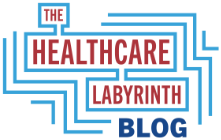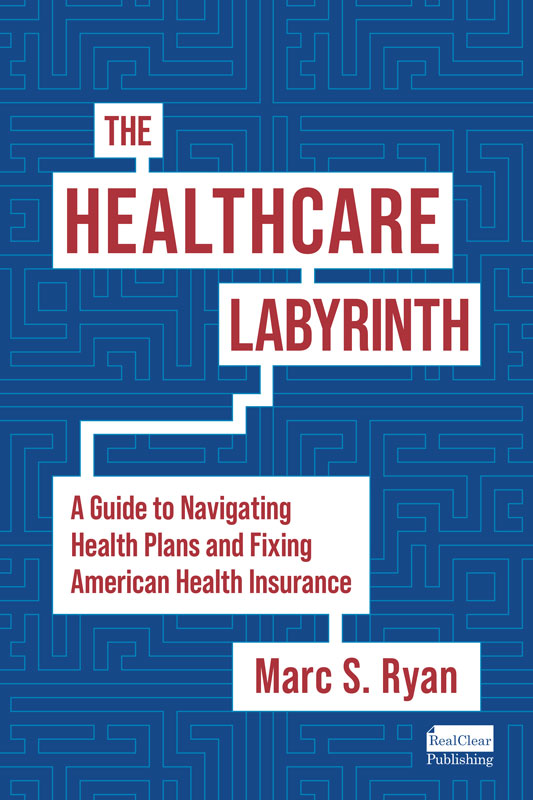The health plan industry has been in turmoil since an April 7, 2024 New York Times article appeared attacking prominent insurers and a data technology vendor, MultiPlan, for seemingly transferring huge out-of-network bills to commercial product patients.
Insurers are already battling major headwinds related to two other issues:
- Prior authorization (PA) is under attack. Many states have passed various prior authorization limitations and transparency requirements. Some states have passed state-level “Gold Card” laws that free providers of any PA if they have assembled a high percentage of previous approvals. This differs dramatically from plans issuing Gold Card privileges based on internal criteria. A 2024 rule by the Centers for Medicare and Medicaid Services (CMS) significantly limits PA use in Medicare Advantage (MA), restricting most PA reviews to using the traditional fee-for-service program (FFS) criteria and requirements.
- There have also been huge complaints regarding claim denials, where plans deny claims using artificial intelligence and other claims overlay technology. Some restrictions on the use of AI are now in place in MA. But there continues to be a drumbeat from providers to further rein in these claims denials. In MA in particular, hospitals complain that revenue derived from MA lives is much lower because bed days are much less (due to PA) and cash flow is impacted given the time it takes to appeal denials and get claims paid.
So, is the MultiPlan issue yet another front on which health plans may have to fight? The public relations on the article alone has raised lawmakers’ eyebrows. The American Hospital Association has asked the federal Department of Labor to investigate both MultiPlan and large insurers to determine whether they engage in business practices that disadvantage patients and providers under the self-insured ERISA law and regulations.
So what does MultiPlan do on behalf of health plans
While the data and technology firm has networks and negotiation services, more and more MultiPlan is hired by insurers to scrutinize claims coming in from out-of-network providers and lowering the ultimate payouts.
Some commercial products have no out-of-network coverage, except for emergencies and certain providers working in in-network facilities. In this case, unless covered by the No Surprises Act or NSA (more later), the bill is the responsibility of the patient in toto. The patient is potentially at-risk for the entire billed charges from the provider.
If a given commercial product has out-of-network coverage, an insurer can still lower its costs and transfer a big piece to a patient. Insurers may limit payments for out-of-network providers to various levels that are paid to in-network providers. In so doing, the provider can balance bill the patient for the difference between the allowed amount by the health plan and the provider’s billed amount.
As indicated, this phenomenon is found largely in commercial coverage, but there could be some issues in Medicaid and Medicare as well:
- Medicaid is largely a network product (with emergency coverage out of network) and generally speaking little cost-sharing occurs in the program. Most disputes, including out-of-network providers, are left up to the plan and the provider to settle on. There are also federal and state laws barring providers from balance billing most Medicaid recipients. Admittedly, a Medicaid enrollee could face surprise bills for non-covered Medicaid services.
- In Medicare, bills to any Medicare enrollee, whether FFS or MA, are limited to no more than 100% of the Medicare FFS allowed amount in the vast majority of cases or 115% of the amount in some cases. But while there are limits, balance bills could still be big.
Let’s break down the arguments on each side
The Times article seems alarmed that a health plan or employer group pays less than the provider billed and that the difference is savings. Of course they do. This is managed care. This is nothing new and is necessary due to excessive (some would say obscene) billed amounts from providers. What The Times and providers are saying is simply wrong-headed. They argue plans are boosting “their finances by dispensing low payments” to these out-of-network providers “and burdening patients with large bills.”
A better way of thinking about it is health plans are taking excess out of the system and patients are getting in the middle due to excessive provider billed charges. MultiPlan touts that it uses fairness and independent analysis and it is saving plans and patients a great deal. Plans rightfully are concerned about fraud, waste, and abuse as well as unscrupulous providers simply increasing rates with abandon. In some cases, the vendor leverages its own network relationships with providers to lower bills, which might extinguish most or all of a patient obligation. In other cases, it negotiates a lower rate, which provides benefits to plans/employers and the patient.
On the flip side, the New York Times analysis argues that MultiPlan’s arrangements with big insurers incentivizes both to unfairly limit allowed amounts. The more MultiPlan saves a plan, the more it makes from the contract. While plans have to pay MultiPlan, the more MultiPlan saves, the more its medical expense goes down. Further, in some cases the fees captured by MultiPlan and insurers acting as administrators for employer groups earned them more in fees than was paid out to providers. Other concerns include payments could be lower than average in-network rates and there is little regulation of these arrangements.
Where do I stand
The contracts between MultiPlan and some insurers do seem unseemly. Contingent contracts have always bothered me in healthcare. At the same time, I agree with insurers that they must do what they need to do to reduce overall expense. And as is noted in the article, providers tend to inflate their billed amounts often and by large amounts. The private equity firms and hospital systems that now own a majority of physicians have great incentive to drive higher and higher rates.
In the No Surprises Act world, which covers out-of-network emergency visits and out-of-network services in-facility surgeries, the providers need only to ask for huge amounts and will likely get awarded it in their arbitrations. The plan now pays all of that fee. And for scenarios where services are not covered by an insurance contract or insurers cap the amount paid under out-of-network coverage provisions, providers can continue their efforts to overbill the patient and hope for as much payment as possible.
But I do empathize with patients, who end up in the middle of all this. Often, they do not know the provider they visited was out-of-network until the huge bill arrives. And state and federal regulators are failing all Americans if they cannot craft a reasonable approach to solve these out-of-network situations. It causes financial ruin for people.
So how do we reform
A few thoughts for reform:
- Enrollees have to do a better job understanding in-network and out-of-network issues. My book, The Healthcare Labyrinth (available on this site), has a chapter devoted to surprise billing, which lessens but does not go away with the NSA.
- The NSA should be expanded to more situations, for example where patients are acting in good-faith and believe an emergency exists and their life is in danger. There are plenty of examples where follow-up care is tied to an original emergency but does not have the safeguards of the NSA. Ground ambulance should also be added to the NSA.
- As well, reform the NSA arbitration. It is extremely slanted to providers and is driving awards and likely will impact in-network prices and costs overall in healthcare. The success providers are having with NSA arbitration is providing fodder for providers to raise fees and find additional ways to drive revenue.
- Such arrangements should not be contingent deals but fixed fees. And the charges of ASO insurers and MultiPlan need to be reasonable.
- The model should go back to one of negotiation and leveraging provider relationships MultiPlan and similar entities have. The focus should be not just on limiting health plan payouts. Patient payments need to be a focus as well.
- I think providers should be paid median in-network rates in these situations. Today, plans are required to calculate a qualifying payment amount (QPA) in the NSA. The same process could be used. I note providers accuse plans of not calculating right, but a solution like this would make sense.
- All of the recent controversies over the NSA (where providers are winning the vast majority of cases and being given huge payments) and the MultiPlan issue cry for price reform. In my book, The Healthcare Labyrinth (available at this site), I argue that the U.S. would be wise to take a page out of other developed world countries’ books and create a uniform payment system, perhaps across lines of business or for each. This would settle the issue of exorbitant prices billed by providers and reduce the costs needed for administering claims, appeals, and more. These rates could apply to network and out-of-network situations. Plans would compete on quality and member satisfaction. Networks will still matter and will drive the best efficiency and quality.
- Stop the pernicious effect that private equity is having on healthcare. These ugly stories seemed to have come out right around the time private equity’s ownership rose considerably. The same can be said of hospitals owning more and more physicians. That is why I like President Biden’s antitrust agenda and scrutiny of mergers and consolidations. It is interesting, too, that MultiPlan changed from its primary negotiation model to one based more on maximizing its take using algorithms when it got bought by – you guessed it —a private equity firm.
Conclusion
The provider lobby has become extremely proficient in working lawmakers, CMS, and the media to tout its party line. At the same time, the plan lobby has been flat-footed. We will continue to see sensational headlines relating to providers’ twisting of the facts. What is being missed is that providers are busy driving costs up in the system with each lobbying campaign, law, and rule change. Prior authorization changes at the state and federal level will drive costs. The terribly provider-skewed NSA arbitration will drive costs (as a recent Brookings study seems to show). Hospitals and private equity firms are buying providers. Hospitals are forcing providers to change practice patterns. This drives up costs. Private equity is concentrating on driving billed charges up and scheming to capture as much revenue as possible. This drives up costs as well.
Additional reading (note: you can register to read the NYT article even without subscribing):
https://www.nytimes.com/2024/04/07/us/health-insurance-medical-bills.html
https://www.modernhealthcare.com/insurance/multiplan-cigna-aetna-unitedhealth-labor-department-aha
#priorauthorization #claimsdenials #nsa #nosurprisesact #surprisebilling #healthplans #providers
— Marc S. Ryan





